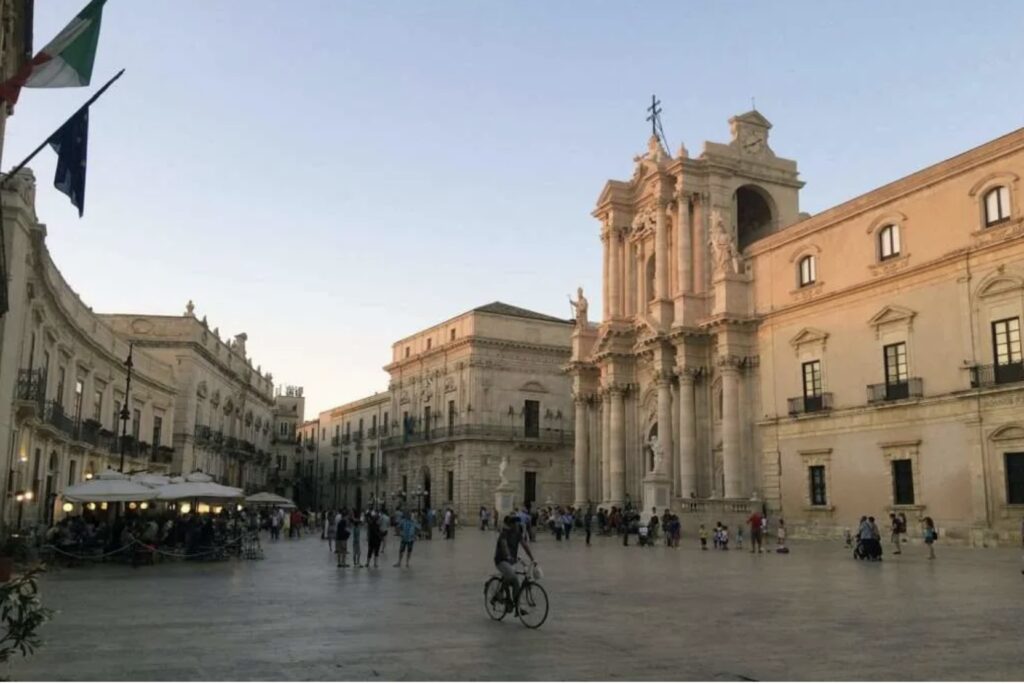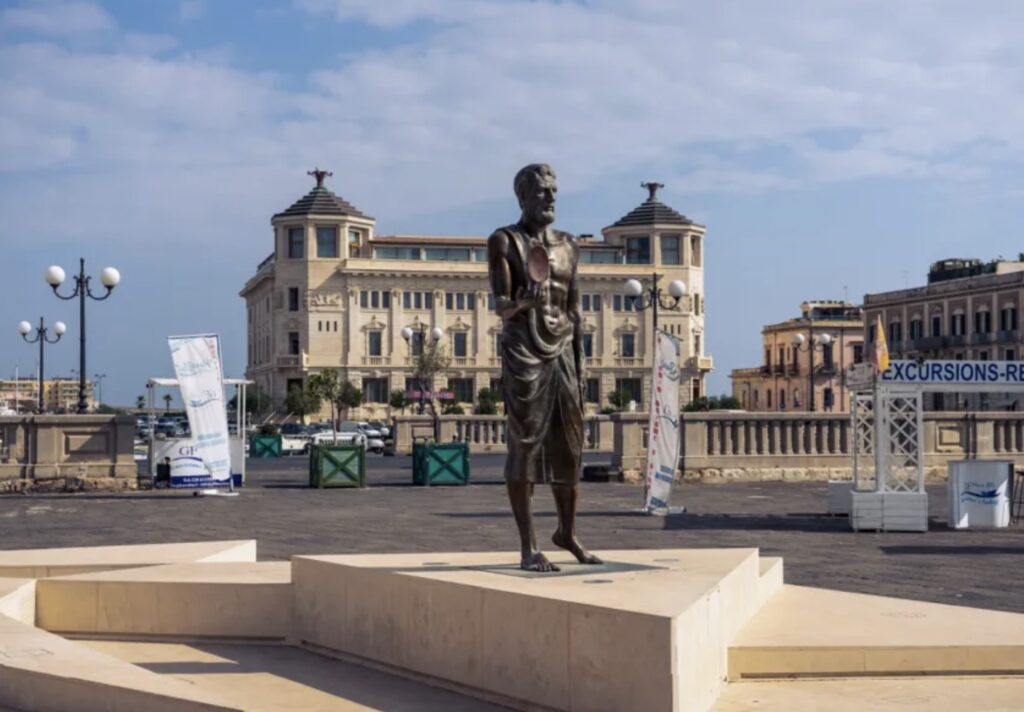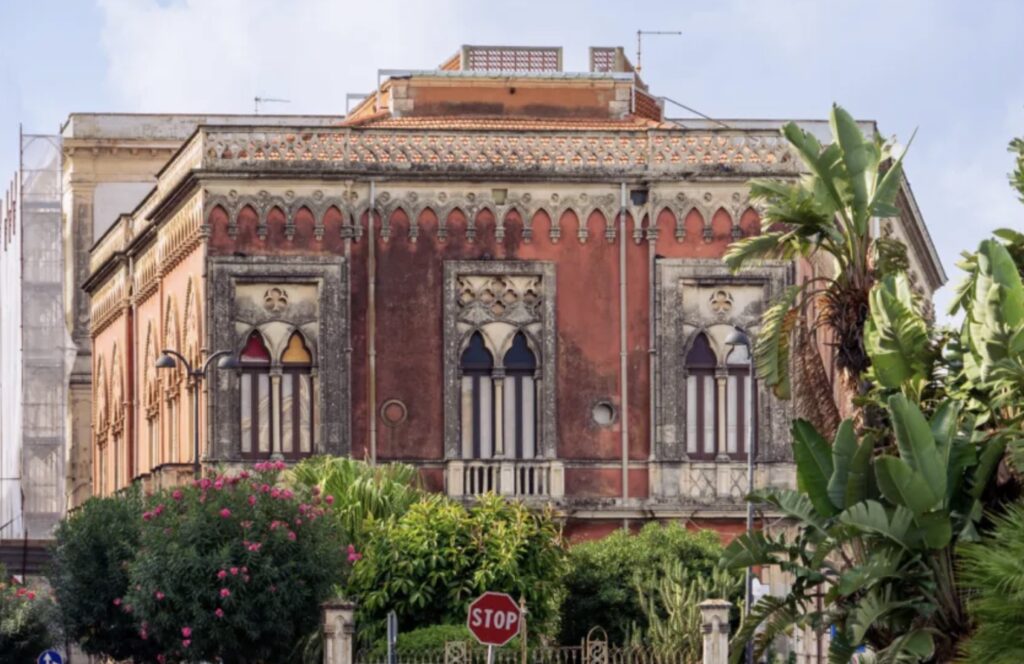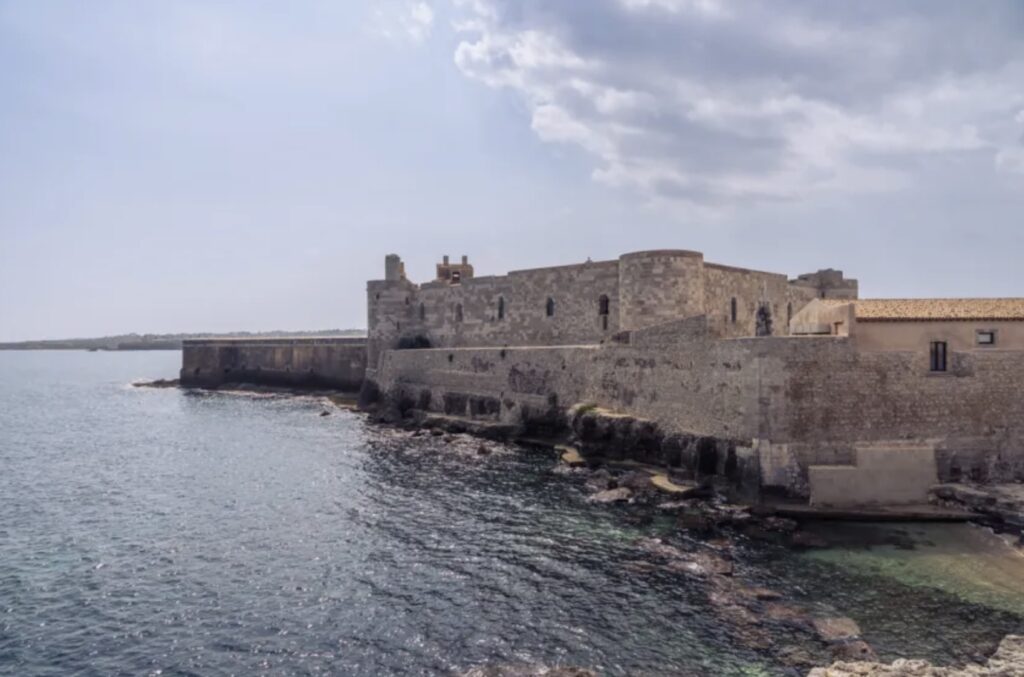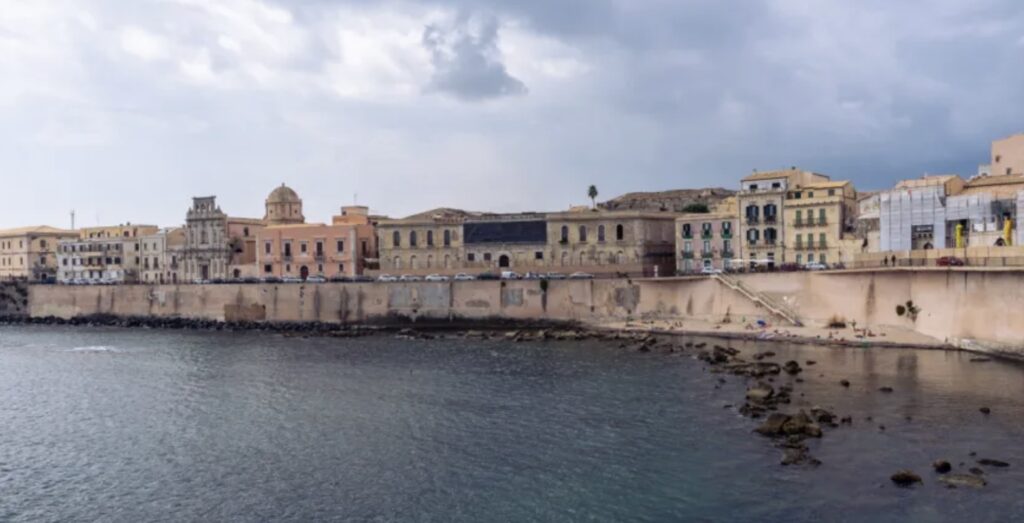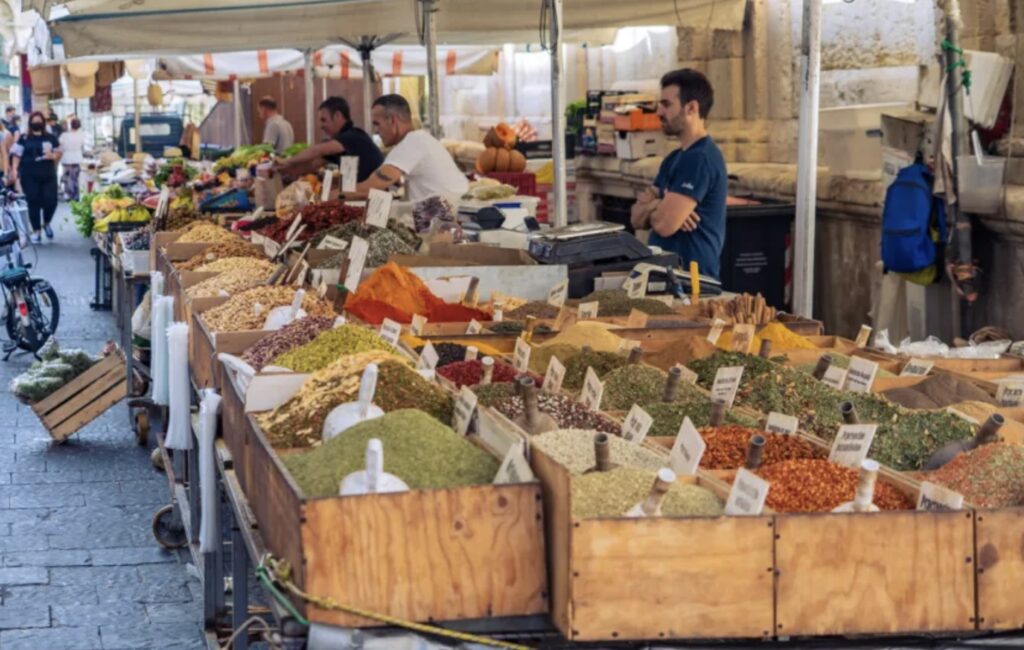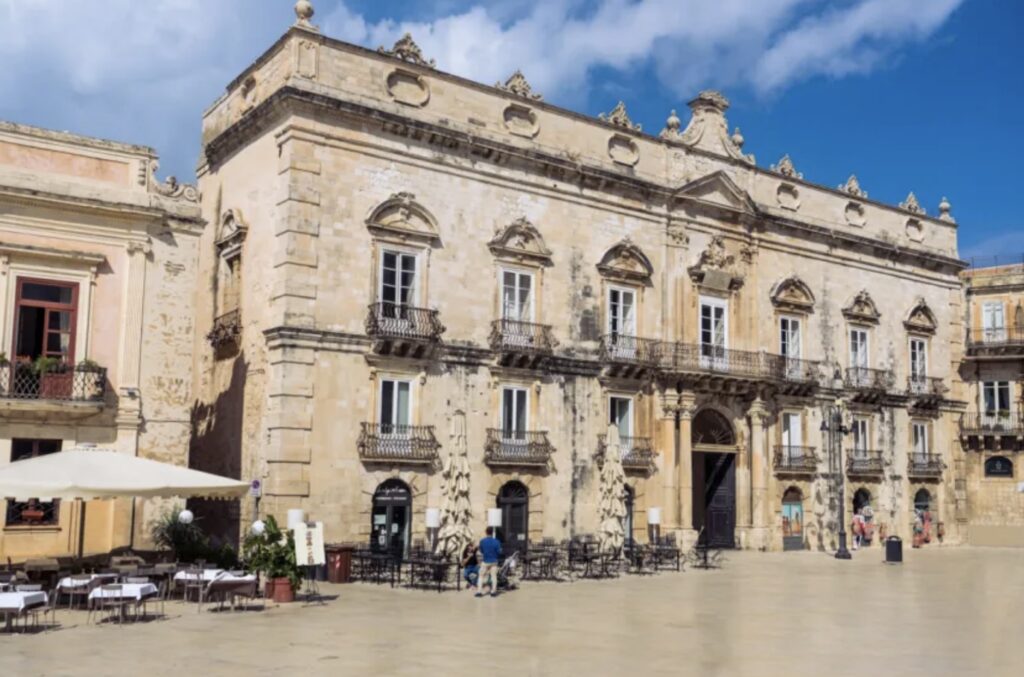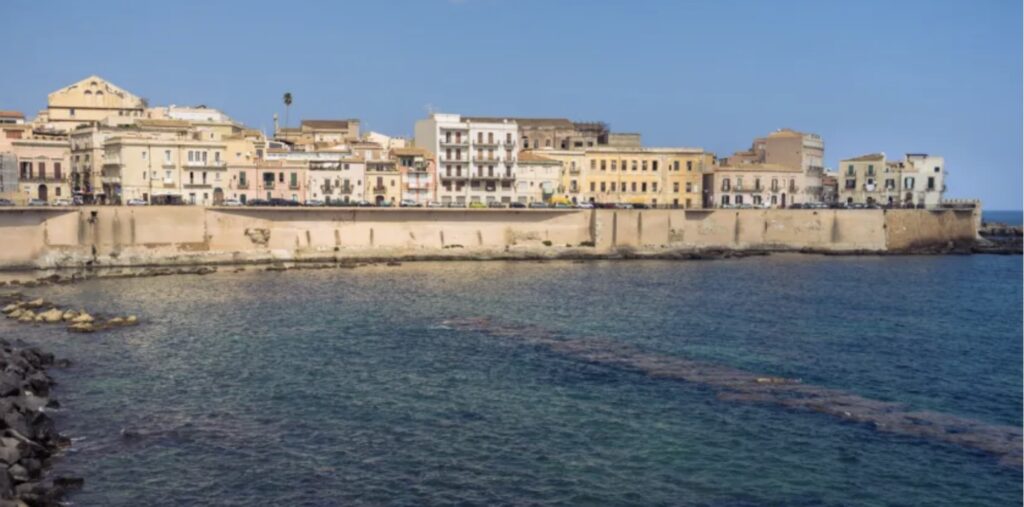ChatGPT:
Syracuse, located on the southeastern coast of Sicily, Italy, is a city rich in history and culture. Founded by Ancient Greek colonists in 734 BC, it was once one of the major powers of the Mediterranean. Notable for its well-preserved Greek and Roman ruins, including the Temple of Apollo and the Greek Theatre, Syracuse is a UNESCO World Heritage Site.
The city’s historic center, Ortigia, features narrow streets, baroque architecture, and the stunning Cathedral of Syracuse, which incorporates elements of an ancient Greek temple. The city also boasts beautiful coastal views, a vibrant culinary scene, and lively local markets.
The history and development of Syracuse, Sicily, span over millennia, marked by periods of prosperity, conflict, and cultural richness. Here’s a concise overview:
Ancient Syracuse
- Foundation and Early Growth (734 BC – 5th Century BC):
- Syracuse was founded by Greek settlers from Corinth in 734 BC.
- It quickly grew to become one of the most important cities in the Greek world, known for its wealth, military strength, and cultural achievements.
- The city expanded by conquering neighboring territories and establishing colonies.
- Tyrannical Rule (5th Century BC):
- Under leaders like Gelon and Hieron I, Syracuse reached its zenith, becoming the dominant power in Sicily.
- It defeated the Carthaginians in the Battle of Himera (480 BC) and Athens in the Sicilian Expedition (415-413 BC).
- Classical Period (4th Century BC – 3rd Century BC):
- The city experienced a cultural and architectural boom, constructing notable structures like the Greek Theatre.
- The mathematician and inventor Archimedes was born here in 287 BC.
Roman and Byzantine Periods
- Roman Conquest (212 BC):
- Syracuse fell to the Romans after a protracted siege in 212 BC during the Second Punic War.
- It became an important city within the Roman Empire, though it lost its political independence.
- Byzantine Era (5th Century AD – 9th Century AD):
- After the fall of the Western Roman Empire, Syracuse became part of the Byzantine Empire.
- It served as the capital of the Byzantine Empire in Italy for a brief period in the 7th century.
Medieval and Modern Periods
- Arab and Norman Conquests (9th Century – 12th Century):
- The city was captured by the Arabs in 878 AD, leading to a period of Islamic influence.
- It was later conquered by the Normans in 1085, becoming part of the Kingdom of Sicily.
- Spanish Rule (15th Century – 18th Century):
- Under Spanish rule, Syracuse faced economic decline but saw the construction of significant baroque architecture, especially after the 1693 earthquake.
- Modern Era (19th Century – Present):
- Sicily became part of the unified Kingdom of Italy in 1860.
- In the 20th century, Syracuse modernized and grew, though it still retains its historical charm.
- Today, it is a UNESCO World Heritage Site, renowned for its archaeological treasures and vibrant cultural life.
Syracuse is home to numerous historical monuments and tourist attractions that showcase its rich cultural heritage. Here’s a list of some of the most notable ones:
Ancient Greek and Roman Sites
- Greek Theatre (Teatro Greco):
- A large ancient Greek theatre dating back to the 5th century BC, used for dramatic performances and political gatherings.
- Ear of Dionysius (Orecchio di Dionisio):
- A limestone cave in the shape of a human ear, renowned for its acoustics, located in the Archaeological Park of Neapolis.
- Temple of Apollo:
- One of the oldest Doric temples in Sicily, situated on the island of Ortigia.
- Roman Amphitheatre:
- An impressive Roman structure used for gladiatorial combats and other public spectacles.
Medieval and Baroque Architecture
- Cathedral of Syracuse (Duomo di Siracusa):
- A stunning baroque cathedral that incorporates the remains of a 5th-century BC Greek temple dedicated to Athena.
- Church of Santa Lucia alla Badia:
- A baroque church known for its beautiful facade and housing Caravaggio’s painting “Burial of St. Lucy.”
- Castello Maniace:
- A medieval fortress built by Emperor Frederick II in the 13th century, located at the tip of Ortigia.
Museums and Cultural Sites
- Archaeological Museum (Museo Archeologico Regionale Paolo Orsi):
- One of Italy’s most important archaeological museums, featuring artifacts from prehistoric to Roman times.
- Bellomo Palace Regional Gallery (Galleria Regionale di Palazzo Bellomo):
- A museum showcasing medieval and Renaissance art, located in a historic palace.
Natural and Scenic Attractions
- Ortigia Island:
- The historic heart of Syracuse, known for its narrow streets, beautiful piazzas, and vibrant atmosphere.
- Fountain of Arethusa (Fonte Aretusa):
- A freshwater spring on Ortigia, steeped in Greek mythology and surrounded by lush vegetation.
- Plemmirio Marine Park:
- A protected marine area offering stunning coastal views, rich marine life, and opportunities for diving and snorkeling.
Other Notable Sites
- Jewish Bath (Mikvah):
- An ancient Jewish ritual bath, one of the oldest in Europe, located underground in Ortigia.
- San Giovanni Catacombs:
- An extensive network of early Christian catacombs and burial sites.
These attractions highlight Syracuse’s diverse history and make it a captivating destination for tourists interested in archaeology, history, and culture.
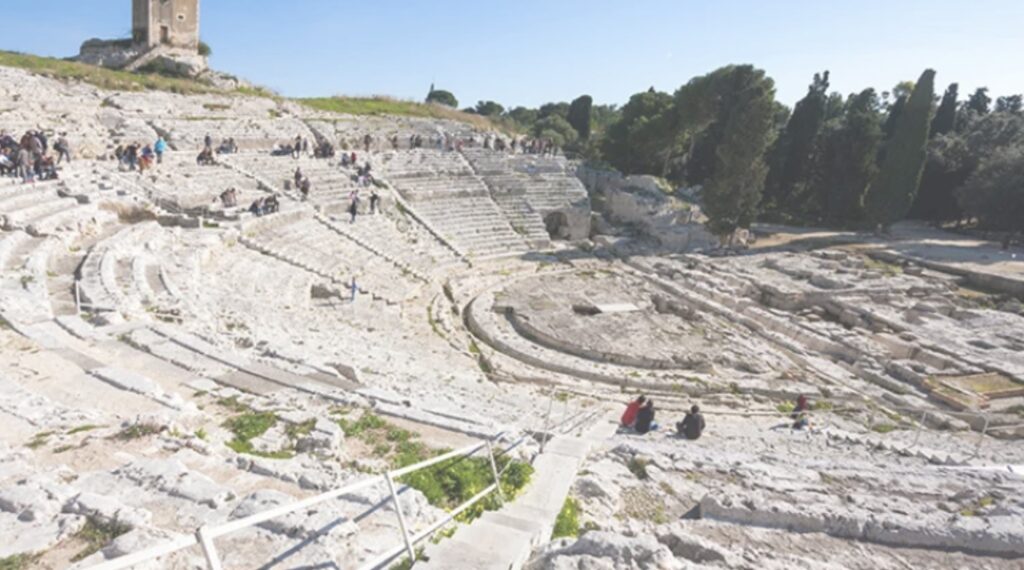
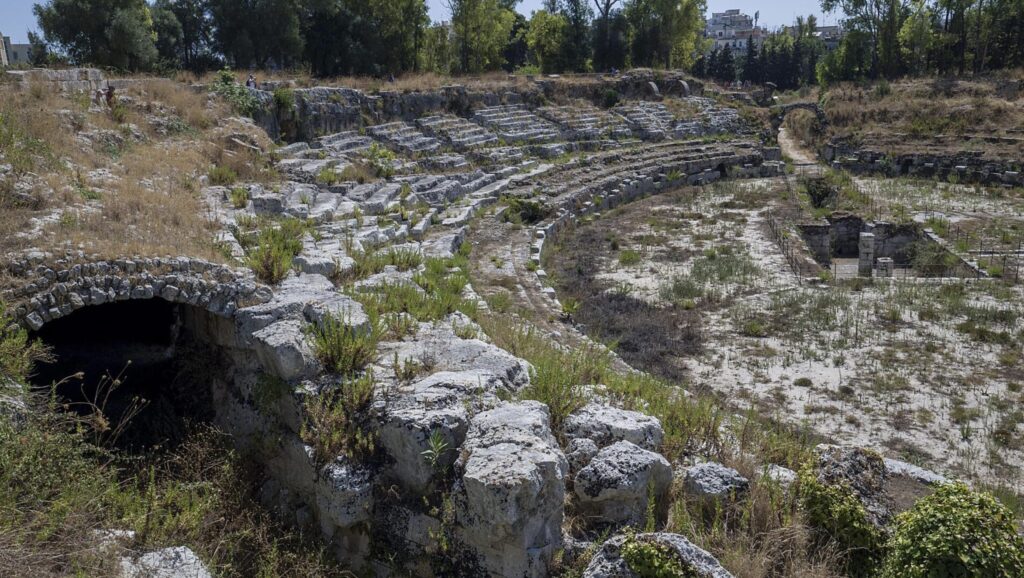
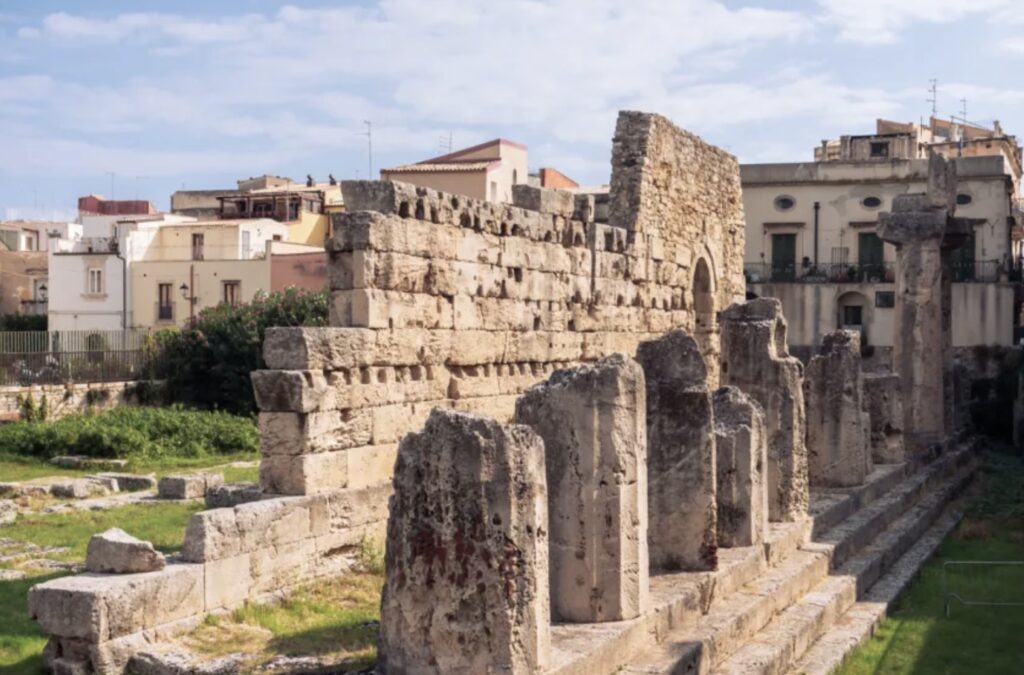
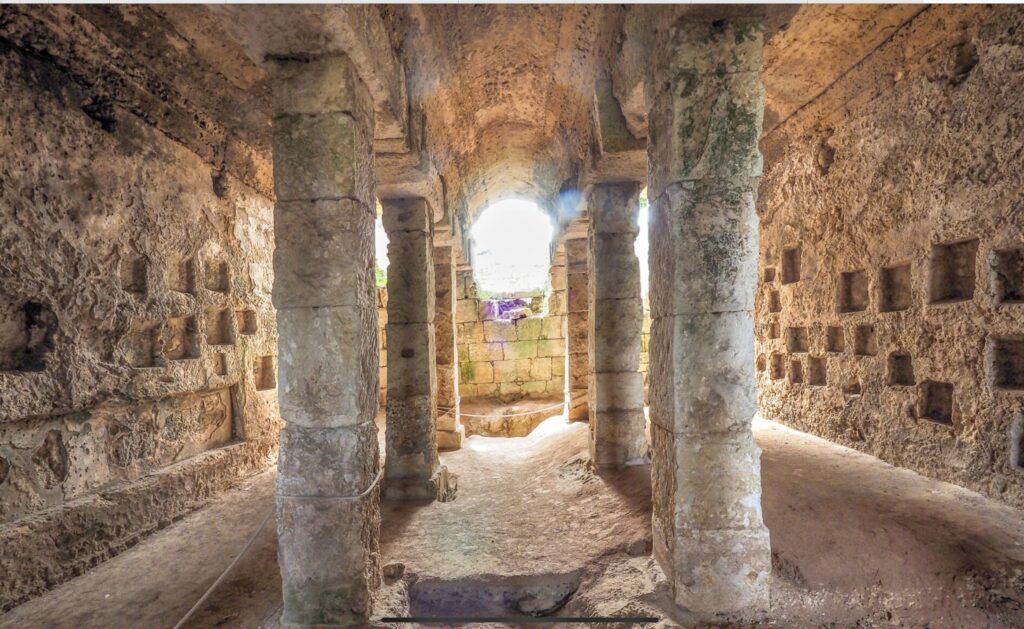
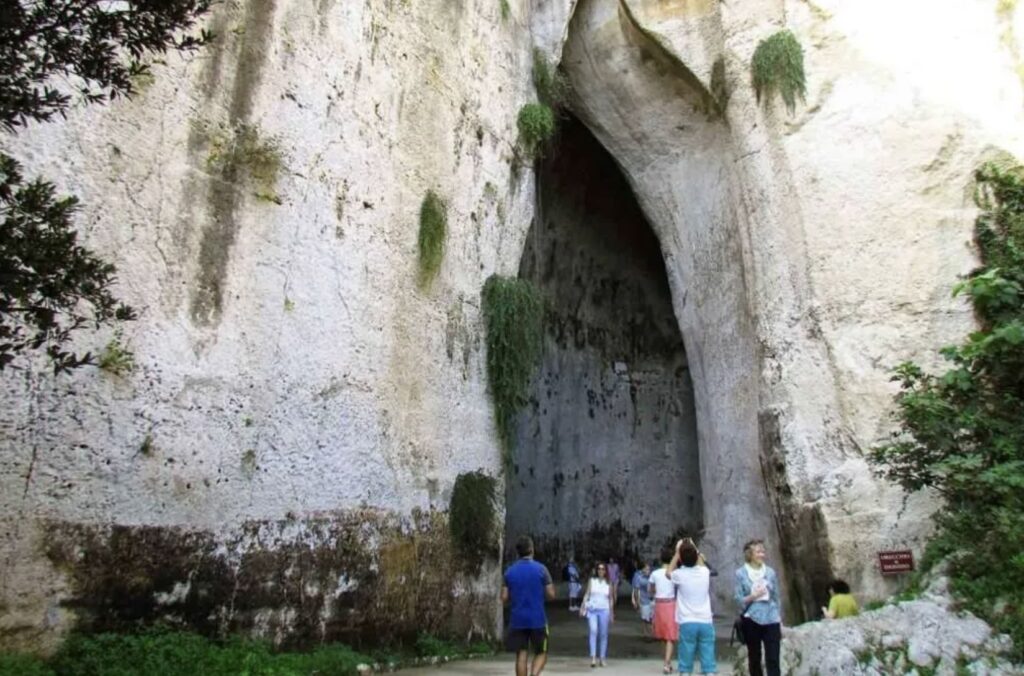
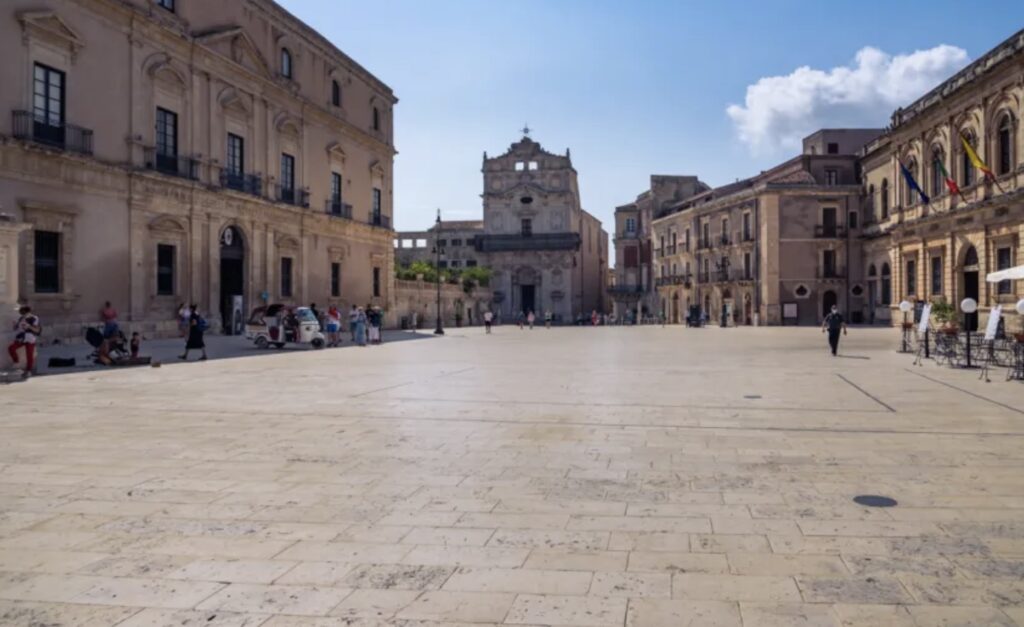
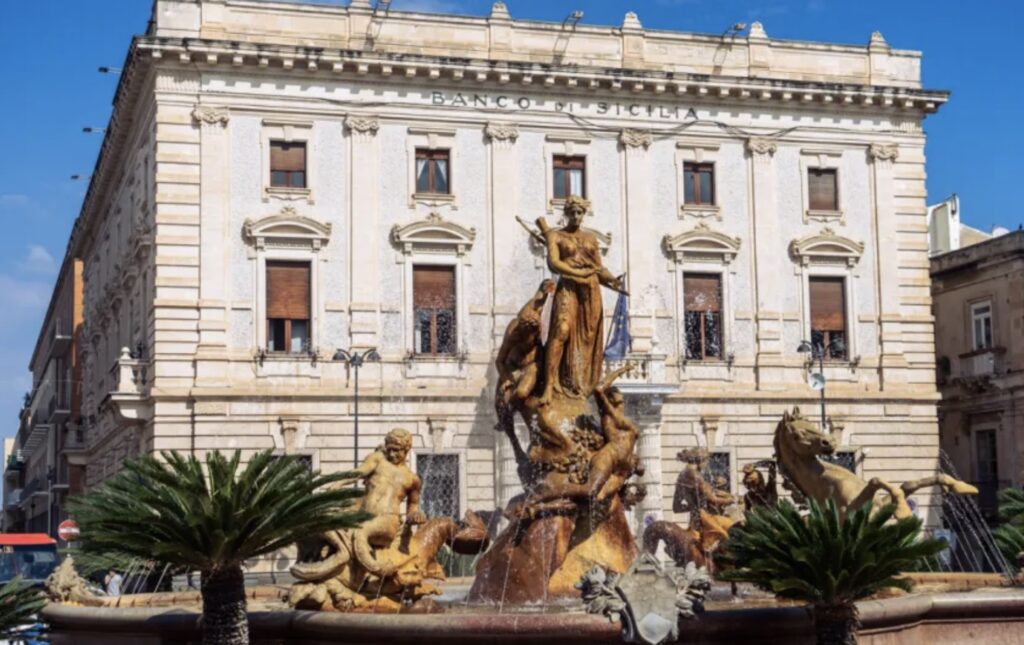
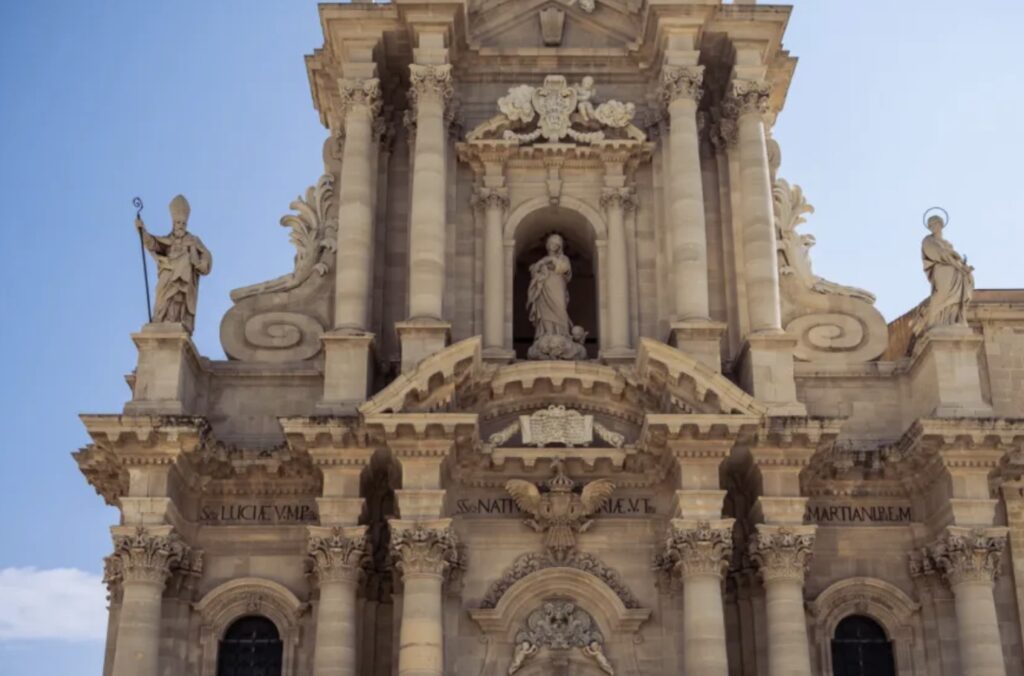
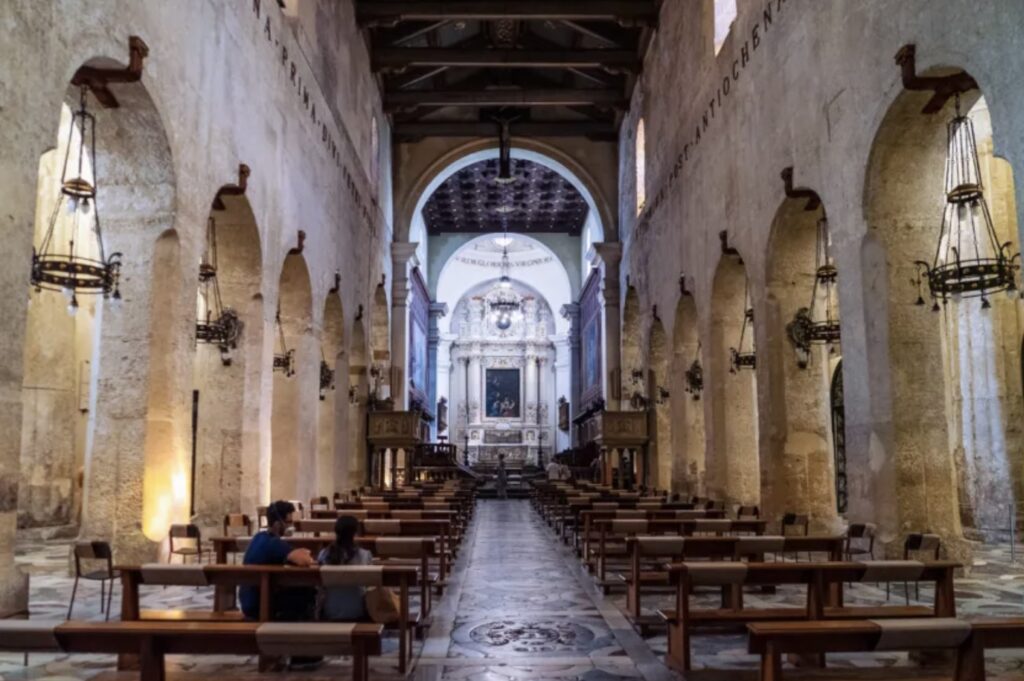
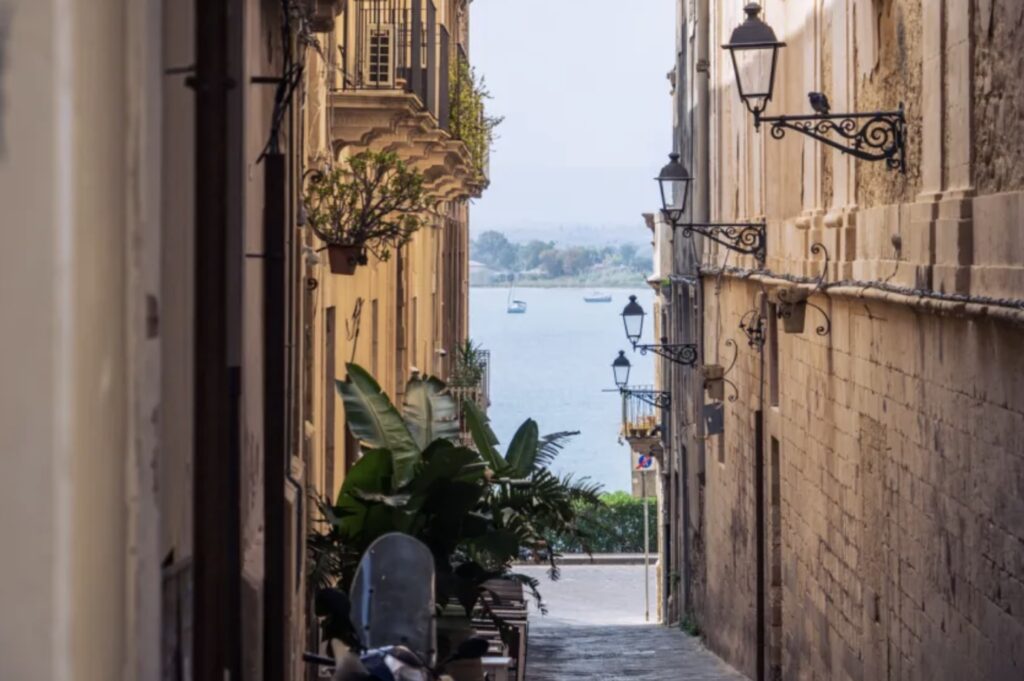
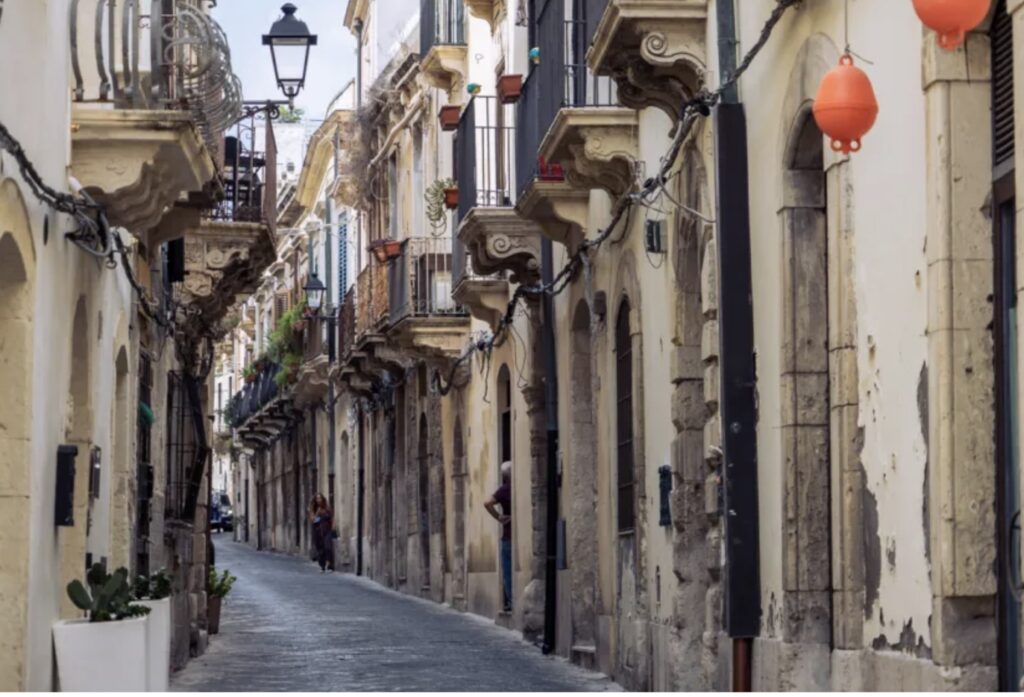
Here is a suggested walking itinerary to visit all the major attractions of Syracuse, Sicily, starting from the historic heart, Ortigia, and moving outward:
Morning: Explore Ortigia
- Start at the Temple of Apollo:
- Time: 8:30 AM
- Duration: 20 minutes
- Begin your day at one of the oldest Doric temples in Sicily, located at the entrance of Ortigia.
- Walk to the Ortigia Market:
- Time: 9:00 AM
- Duration: 1 hour
- Stroll through the vibrant market, enjoy the lively atmosphere, and perhaps grab a light breakfast or snack from the street food vendors.
- Cathedral of Syracuse (Duomo di Siracusa):
- Time: 10:00 AM
- Duration: 1 hour
- Visit the stunning baroque cathedral built on the site of an ancient Greek temple. Don’t miss the beautiful interior and the square outside.
- Fountain of Arethusa:
- Time: 11:00 AM
- Duration: 30 minutes
- A short walk from the cathedral, this freshwater spring is steeped in Greek mythology and offers a picturesque spot for photos.
- Castello Maniace:
- Time: 11:45 AM
- Duration: 1 hour
- Head to the southern tip of Ortigia to explore this medieval fortress with stunning views over the sea.
Lunch Break
- Lunch in Ortigia:
- Time: 12:45 PM
- Duration: 1 hour
- Choose a local restaurant or café in Ortigia for lunch. Try some Sicilian specialties like pasta alla Norma or fresh seafood.
Afternoon: Archaeological Park and Museums
- Archaeological Park of Neapolis:
- Time: 2:00 PM
- Duration: 2 hours
- Take a short walk or taxi to the Archaeological Park. Explore the Greek Theatre, the Roman Amphitheatre, and the Ear of Dionysius.
- Archaeological Museum (Museo Archeologico Regionale Paolo Orsi):
- Time: 4:00 PM
- Duration: 1.5 hours
- Visit one of Italy’s most important archaeological museums, located near the Archaeological Park, to see a vast collection of artifacts.
Evening: Return to Ortigia and Final Stops
- Bellomo Palace Regional Gallery (Galleria Regionale di Palazzo Bellomo):
- Time: 5:30 PM
- Duration: 1 hour
- Head back to Ortigia to visit this museum showcasing medieval and Renaissance art.
- Church of Santa Lucia alla Badia:
- Time: 6:30 PM
- Duration: 30 minutes
- A short walk from Bellomo Palace, this baroque church houses Caravaggio’s “Burial of St. Lucy.”
- Dinner in Ortigia:
- Time: 7:00 PM
- Duration: 1.5 hours
- End your day with a leisurely dinner at one of the many excellent restaurants in Ortigia, enjoying the local cuisine and atmosphere.
- Evening Stroll:
- Time: 8:30 PM
- Duration: Flexible
- Take a relaxed evening stroll around Ortigia, perhaps visiting any sites you missed or simply enjoying the beautiful streets and sea views.
This itinerary provides a comprehensive day exploring the main attractions of Syracuse, offering a mix of historical sites, cultural experiences, and local flavors. Adjust the timings and durations based on your pace and interests.
